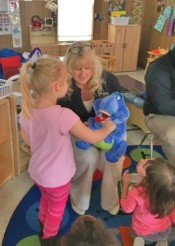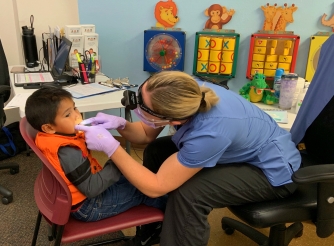It's still a seller's market, but potential
sellers need to make the right moves to attract buyers
Feb 13, 2019 @
12:05 pm
By Scott Slater
Without a doubt, 2018 was a big year for M&A in
the independent wealth management industry, and robust activity is expected to
continue this year.
Fidelity recently gathered nearly 40 leaders
from across the industry at our fourth annual M&A Leaders Forum to talk
about just that — M&A trends and outlook for the months ahead. There was a
consensus that it's still a seller's market, but that potential sellers need to
prepare and make the right moves to attract buyers.
What's more, recent market volatility may
affect valuations and
the balance between buyer and seller, so there is an increasing sense of
urgency to prepare to engage.
So what should firms that are considering a
sale be thinking and doing? Here are five key things:
1. Define your culture and evaluate the
right-fit buyer. Both
buyers and sellers are paying more attention to post-deal integration now than
ever before, so a good cultural fit is important. But before you can find the
right match, take time to look internally to identify, then showcase, your
firm's key values. What defines who you are and how you operate? Articulate
specifically what you want to preserve or emphasize in the new organization.
Then, identify a range of ways that you could achieve those top priorities, and
share those upfront with potential partners.
One of the benefits of a seller's market is
the tremendous range of buyer business models that exist and continue to
emerge, but too often sellers do insufficient due diligence at this stage.
Develop a process to evaluate the right-fit buyer, such as utilizing a brief
but consistent checklist of your priorities, and discuss hypothetical client
service and operating cases to get a sense of what is truly important to a
buyer.
2. Think through your ideal outcome. Firm owners who are thinking about selling
need to clearly define what outcome they want, now and several years down the
road. Historically, selling primarily meant succession and retirement, but as
the industry becomes more complex and capital-intensive, the most attractive
and visible transactions are focused increasingly on addressing organic growth,
technology, compliance and the operating needs of an improved platform.
You're likely emotionally invested in your
business, so define what you truly want to get out of the deal, apart from the
financials. How will you integrate? What role do you want to play in the firm
once it's acquired — and for how long? And are you prepared to change how you
and your firm operate today to make this a successful partnership? Yes, it's a
seller's market, but it's still important to be prepared to express how you and
your team will contribute to improved performance of the potential buyer's
business, particularly how you will contribute to performance and growth.
3. Involve the next generation. It is equally important to get everyone,
especially your next generation of talent, on the same page early on. Leaders
at our forum stressed the importance of knowing "who is the future"
and "having all key stakeholders involved in due diligence" leading
up to a deal. And many of the most active acquirers regard M&A as a talent
acquisition strategy. Increasingly, a smooth integration that capitalizes on a
scalable platform and service model is the goal, and aligning expectations at
the onset can help you achieve that.
4. Be ready to compete for talent. The market for talent is increasingly
competitive, so it's important to remain focused on retaining your key advisers
and highlighting what makes your firm and its future attractive — especially in
a time of possible change. During the forum, we heard that post-deal,
"ultimately, people will stay because they like your environment."
Make sure you're listening to advisers about career and operating concerns and
how the sale can improve the culture. It can be easy to get caught up in
preparing for a sale, but don't lose sight of retaining and engaging a strong
talent base.
5. Maintain organic growth. Leaders in our session also shared that firms
demonstrating at least some level of organic growth are more attractive to
buyers. Continue to focus on growth and creating a culture of business
development as you prepare for a potential sale — and expect and plan for
market volatility.
When it comes down to it, every firm needs to
think about each of these factors regardless of whether they're ready to sell
in the short term. They should also consider engaging experienced third
parties, such as wealth management-oriented investment bankers and transition
consultants, to help identify issues and options that they may otherwise
overlook.
Firms that understand and take control of the
process, involve all parties from the start and evaluate their breadth of
options will be better prepared to find their best-fit buyer when the time is
right.
Scott
Slater is vice president of practice management and consulting for Fidelity Clearing & Custody Solutions.



 At the WellCare of New York Welcome Room in Washington Heights, dentists from HealthFlex and community providers highlighted the importance to all preventative care, including dental hygiene. Plus HealthFlex provided free dental screenings.
At the WellCare of New York Welcome Room in Washington Heights, dentists from HealthFlex and community providers highlighted the importance to all preventative care, including dental hygiene. Plus HealthFlex provided free dental screenings.